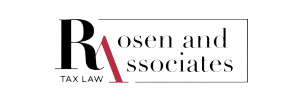
Tax Planning for Canadian Medical Professionals: Maximizing Financial Success
Being a medical professional in Canada comes with numerous rewards and challenges. Among the challenges, navigating the complex tax landscape can be particularly daunting. However, with careful tax planning, medical professionals can optimize their financial success and minimize their tax burden. In this blog post, we will explore some essential tax planning strategies tailored specifically for Canadian medical professionals.
Understanding Tax Deductions:
One of the fundamental aspects of tax planning is maximizing deductions. Medical professionals should familiarize themselves with the various tax deductions available to them. Some common deductions include professional dues and fees, licensing costs, continuing education expenses, malpractice insurance premiums, and business use of a home office. By keeping detailed records and consulting with a tax professional, medical professionals can ensure they claim all eligible deductions, reducing their taxable income.
Incorporation and Business Structures:
Many medical professionals opt to incorporate their practices, which can have significant tax advantages. By incorporating, medical professionals can take advantage of income splitting, allowing them to distribute income among family members who are shareholders in the corporation. This strategy can result in lower overall tax liability by utilizing lower tax brackets and reducing the overall tax burden. However, it’s important to consult with a tax professional to determine the optimal business structure and ensure compliance with regulatory requirements.
Utilizing Registered Retirement Savings Plans (RRSPs):
Medical professionals have the advantage of higher-than-average incomes, making them eligible for significant contributions to Registered Retirement Savings Plans (RRSPs). Contributing to an RRSP allows for tax-deferred growth and offers immediate tax benefits. By strategically contributing to an RRSP, medical professionals can reduce their taxable income, leading to lower tax payments while simultaneously saving for retirement. Moreover, the unused contribution room can be carried forward to future years, providing flexibility and long-term tax planning opportunities.
Taking Advantage of Tax-Free Savings Accounts (TFSAs):
In addition to RRSPs, medical professionals should consider utilizing Tax-Free Savings Accounts (TFSAs) as part of their tax planning strategy. TFSAs provide tax-free growth and withdrawals, making them an ideal vehicle for accumulating savings or investing excess income. Medical professionals can contribute to a TFSA on an annual basis, and any growth or withdrawals are entirely tax-free. Utilizing TFSAs can help diversify the tax treatment of investments and provide additional flexibility in managing their finances.
Incorporating Health and Wellness Expenses:
As medical professionals, maintaining good health and wellness is crucial. Fortunately, certain health and wellness expenses can be incorporated into tax planning strategies. Medical professionals can consider setting up a health spending account (HSA) through their corporation, which allows for pre-tax dollars to be allocated for eligible medical expenses such as dental work, prescription medications, and other healthcare services. Incorporating these expenses can provide tax savings while prioritizing personal well-being.
Careful Management of Investment Income:
Medical professionals often have additional income sources, such as investments, rental properties, or business ventures. Managing these income streams wisely can have a significant impact on tax planning. By diversifying investments across various asset classes, medical professionals can take advantage of preferential tax treatment, such as the capital gains inclusion rate or the dividend tax credit. Additionally, optimizing investment structures and leveraging tax-efficient investment vehicles can help minimize tax liability and maximize after-tax returns.
Effective tax planning is a crucial aspect of financial success for Canadian medical professionals. By understanding the available deductions, incorporating their practice, utilizing registered accounts, incorporating health and wellness expenses, and managing investment income strategically, medical professionals can optimize their tax positions and minimize their tax burdens. It is essential to consult with a qualified tax professional who specializes in working with medical professionals to ensure compliance with tax laws and to implement tailored tax planning strategies that align with individual circumstances. With careful planning, medical professionals can navigate the complex tax landscape and achieve long-term financial prosperity.
**Disclaimer
This article provides information of a general nature only. It does not provide legal advice nor can it or should it be relied upon. All tax situations are specific to their facts and will differ from the situations in this article. If you have specific legal questions you should consult a lawyer.

